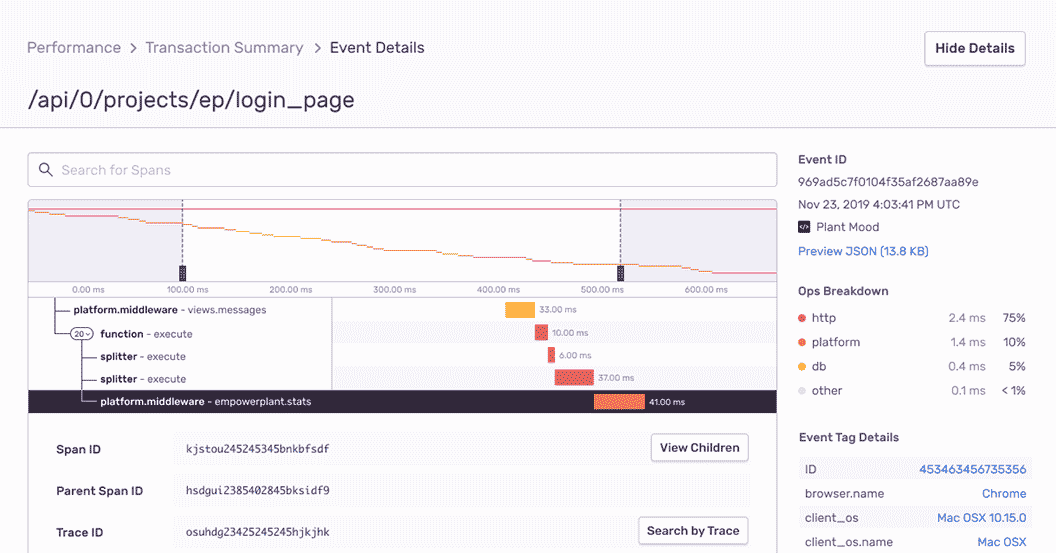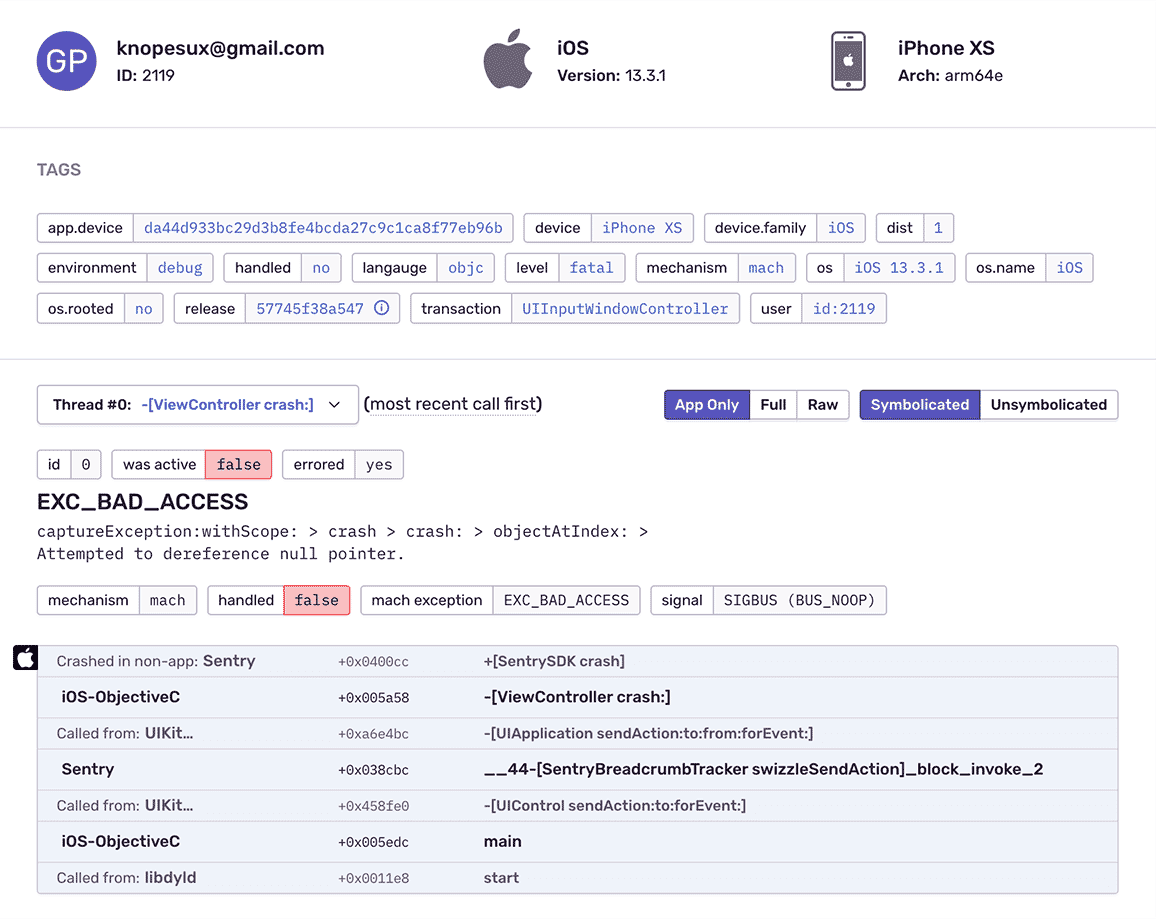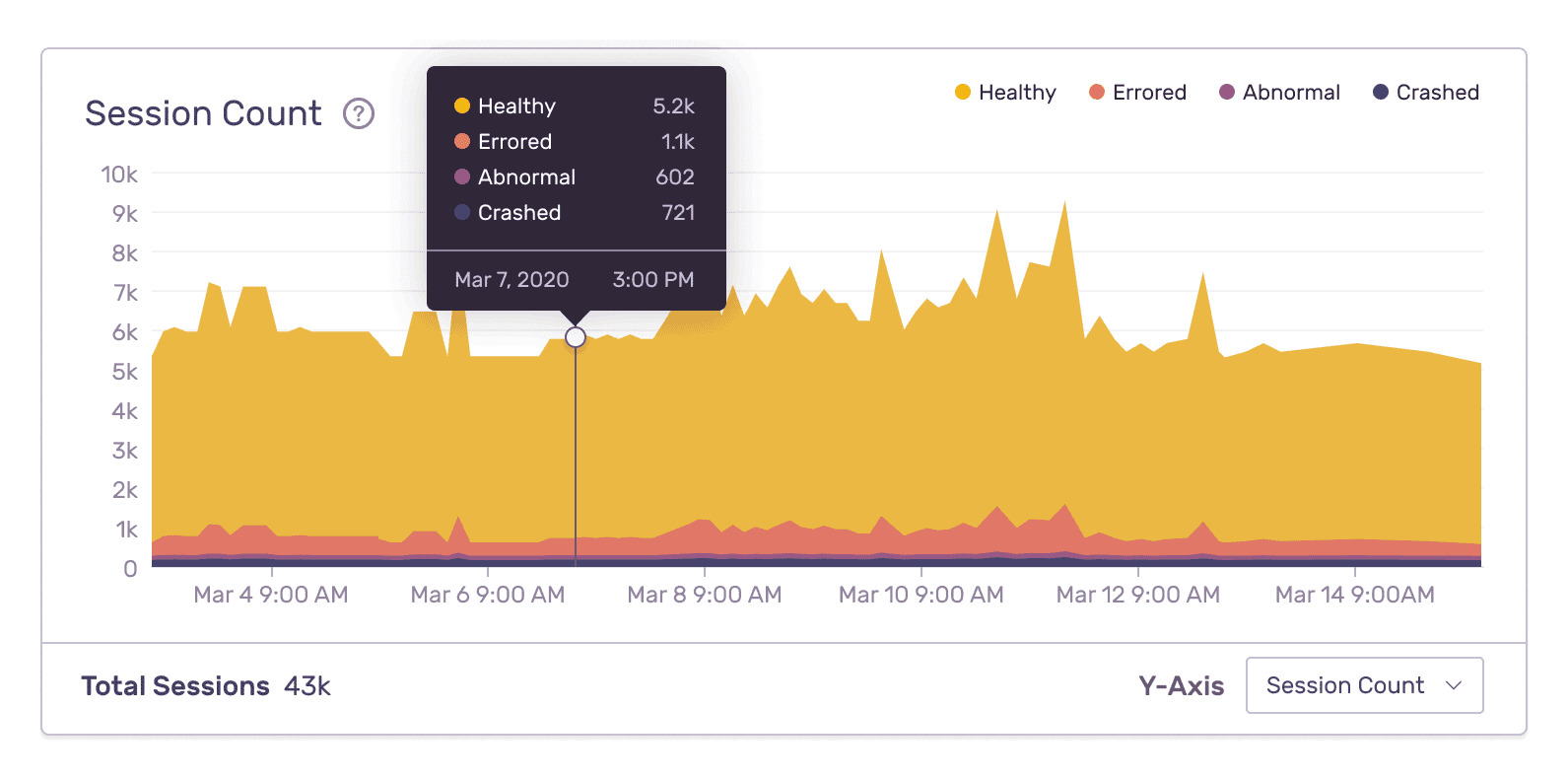
Swift Error & Performance Monitoring
Sentry automatically captures crashes recorded on macOS, iOS, and tvOS. See Swift error details like function, filename, and line number without ever digging through iOS crash logs.
Getting Started is Simple
To integrate Sentry into your Xcode project, specify it in your Podfile, then run pod install:
platform :ios, '9.0' use_frameworks! # This is important target 'YourApp' do pod 'Sentry', :git => 'https://github.com/getsentry/sentry-cocoa.git', :tag => '9.1.0' end
Initialize the SDK as soon as possible in your application lifecycle, such as in your AppDelegate application:didFinishLaunchingWithOptions method:
import Sentry // Make sure you import Sentry func application(_ application: UIApplication, didFinishLaunchingWithOptions launchOptions: [UIApplication.LaunchOptionsKey: Any]?) -> Bool { SentrySDK.start { options in options.dsn = "https://<key>@sentry.io/<project>" options.debug = true // Enabled debug when first installing is always helpful // Example uniform sample rate: capture 100% of transactions for Tracing options.tracesSampleRate = 1.0 } return true }
Check our documentation for the latest instructions.
See all platforms
Swift Performance Monitoring
Within minutes after installing Sentry, software teams are able to trace Swift performance issues back to a poor performing API call as well as surface all related code errors. Engineering Managers and Developers now have a single tool to optimize the performance of their code and deliver fast customer experiences with Performance Monitoring.

Get iOS Crash Reporting With Complete Stack Traces
Reveal hidden context in Apple’s incomplete crash data by automatically symbolicating unreadable symbols. Handle Swift iOS crashes with complete context using the React Native SDK while the Objective-C SDK runs in the background.

Fill In The Blanks About iOS Crashes
See what the app was doing when the iOS crash occurred: every user action, controller changes, and custom breadcrumbs. Record events when devices are offline or in airplane mode, then send crash reports as soons as connection is regained.

Resolve iOS Crashes With Better Data
Improve Swift error monitoring workflow with a full view of releases so you can mark errors as resolved and prioritize live issues. Learn in which version bug first appeared, merge duplicates, and know if things regress in a future release. Add commit data to automatically suggest an owner of each iOS crash and instantly send deploy emails.
“Being able to use Sentry to monitor the performance as well as our mobile applications is important. Using one solution to monitor the entire application stack gives our engineers the visibility they need to deliver a first-rate experience for our customers.”
See The Full Picture Of Any Swift Exception
See what the app was doing when the iOS crash occurred
Find answers to the key questions and insights need to resolve the issue
How actionable is this crash? What was the device? Has this same crash occurred before?